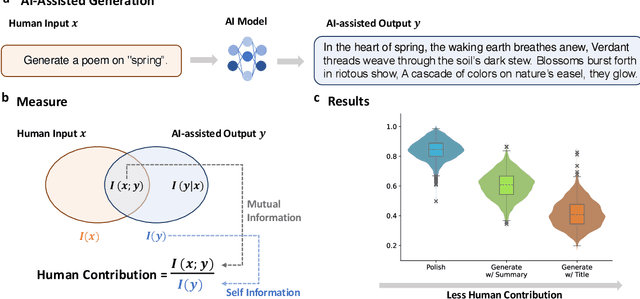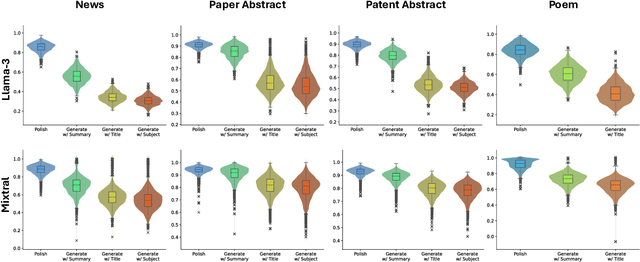Qian Ding
Measuring Human Contribution in AI-Assisted Content Generation
Aug 27, 2024



Abstract:With the growing prevalence of generative artificial intelligence (AI), an increasing amount of content is no longer exclusively generated by humans but by generative AI models with human guidance. This shift presents notable challenges for the delineation of originality due to the varying degrees of human contribution in AI-assisted works. This study raises the research question of measuring human contribution in AI-assisted content generation and introduces a framework to address this question that is grounded in information theory. By calculating mutual information between human input and AI-assisted output relative to self-information of AI-assisted output, we quantify the proportional information contribution of humans in content generation. Our experimental results demonstrate that the proposed measure effectively discriminates between varying degrees of human contribution across multiple creative domains. We hope that this work lays a foundation for measuring human contributions in AI-assisted content generation in the era of generative AI.
Intelligent Reflecting Surfaces vs. Full-Duplex Relays: A Comparison in the Air
Mar 14, 2024Abstract:This letter aims to provide a fundamental analytical comparison for the two major types of relaying methods: intelligent reflecting surfaces and full-duplex relays, particularly focusing on unmanned aerial vehicle communication scenarios. Both amplify-and-forward and decode-and-forward relaying schemes are included in the comparison. In addition, optimal 3D UAV deployment and minimum transmit power under the quality of service constraint are derived. Our numerical results show that IRSs of medium size exhibit comparable performance to AF relays, meanwhile outperforming DF relays under extremely large surface size and high data rates.
 Add to Chrome
Add to Chrome Add to Firefox
Add to Firefox Add to Edge
Add to Edge